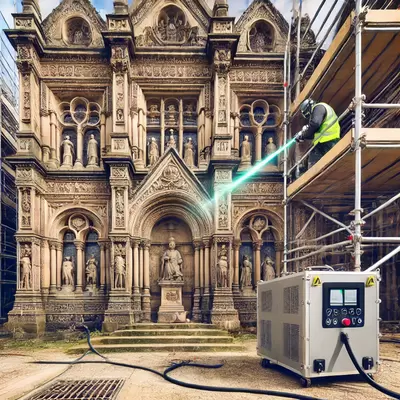Heritage conservation and restoration play a critical role in preserving the historical and cultural treasures that define our society. These efforts help maintain architectural landmarks, artifacts, and other heritage sites for future generations. With innovative technologies such as laser cleaning, the restoration process has become more effective, reducing damage to delicate surfaces.
What is Heritage Conservation?
Heritage conservation involves preserving, protecting, and maintaining historic properties or objects to retain their original integrity. The goal is to protect these items from environmental or man-made factors that may cause deterioration over time. Preserving heritage structures or artifacts helps retain a link to our past, offering future generations an opportunity to learn from history.
The Importance of Restoration
Restoration complements conservation by bringing heritage sites or objects back to their original condition. This meticulous process requires skilled craftsmanship and the use of modern technologies to repair and restore damaged components while respecting the original design. Restoration helps to revitalize decaying buildings, statues, and artifacts, often breathing new life into important cultural symbols.
Innovative Technologies in Heritage Restoration
One of the most advanced techniques in heritage restoration is laser cleaning, which offers a precise and effective solution for removing contaminants, rust, and other surface imperfections from sensitive materials. Unlike traditional abrasive methods, laser cleaning is non-invasive, making it ideal for restoring delicate surfaces like stone carvings, historic facades, and sculptures.
How Laser Cleaning Works
Laser cleaning uses high-energy laser pulses to vaporize contaminants without causing physical harm to the underlying material. It’s a highly controlled process that allows restoration specialists to target specific areas with pinpoint accuracy. This method not only preserves the structural integrity of heritage sites but also helps maintain their aesthetic appeal.
Benefits of Laser Cleaning in Heritage Restoration
- Non-Destructive: Laser cleaning avoids the use of harsh chemicals or abrasive materials, reducing the risk of damaging fragile artifacts.
- Precision: This technique can be fine-tuned to remove layers of contaminants without affecting the original surface.
- Environmentally Friendly: Since no toxic chemicals are involved, laser cleaning is a sustainable and eco-friendly solution.
- Cost-Effective: By minimizing the need for extensive repairs, laser cleaning can reduce overall restoration costs in the long term.
Successful Applications of Laser Cleaning
Laser cleaning has been successfully applied to several heritage restoration projects worldwide. For example, it has been used to clean historic sculptures, ancient wall paintings, and ornate architectural elements. These projects demonstrate how this innovative method can restore the original beauty of heritage sites without compromising their historical value.
Conclusion
Heritage conservation and restoration are essential for preserving our cultural identity. With modern technologies like laser cleaning, we can restore historical artifacts and buildings more efficiently, ensuring their longevity for generations to come. By investing in these advanced restoration methods, we continue to honor and protect the rich legacy of our past.

